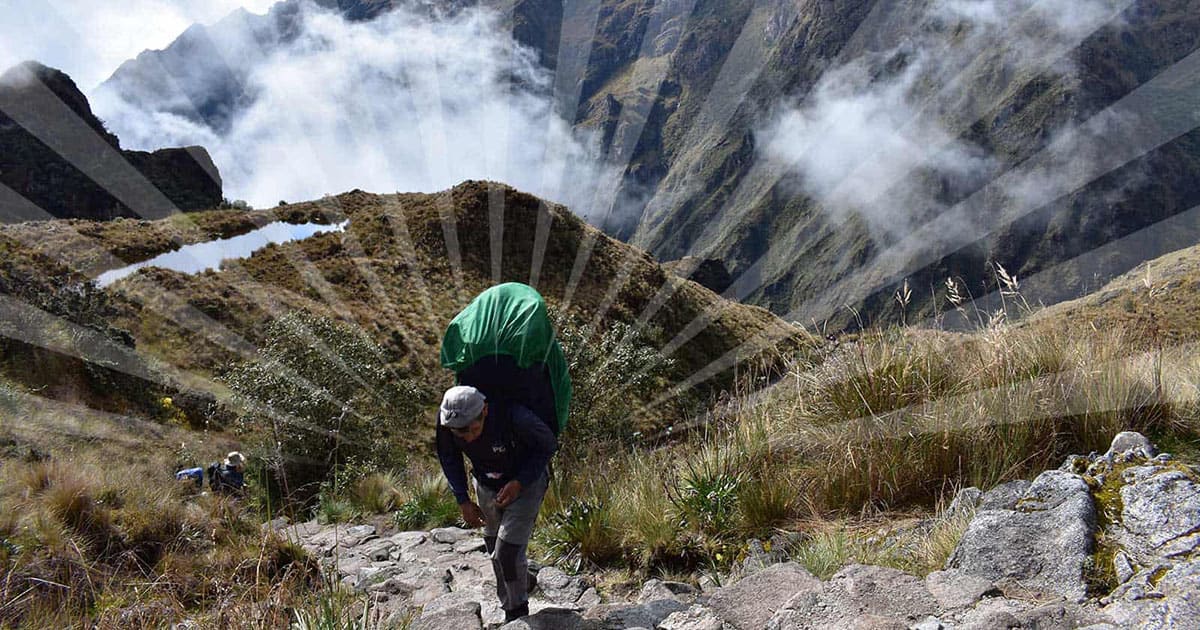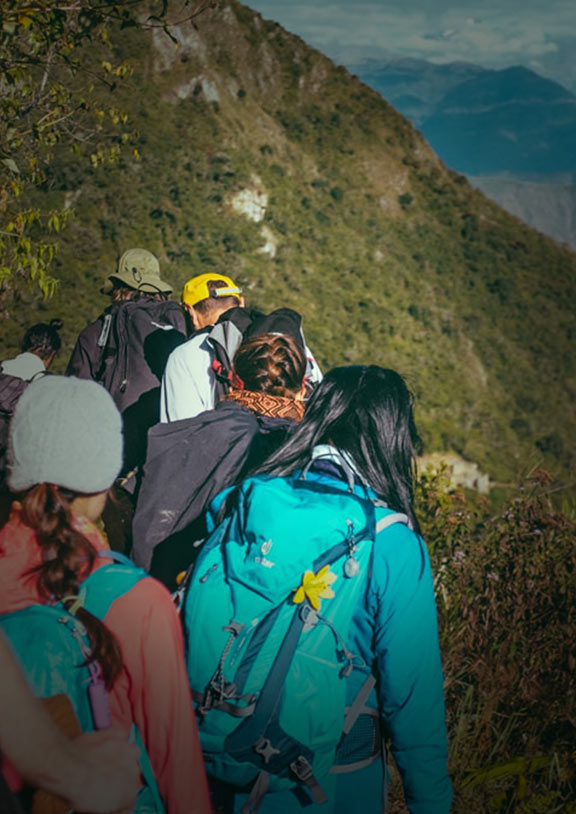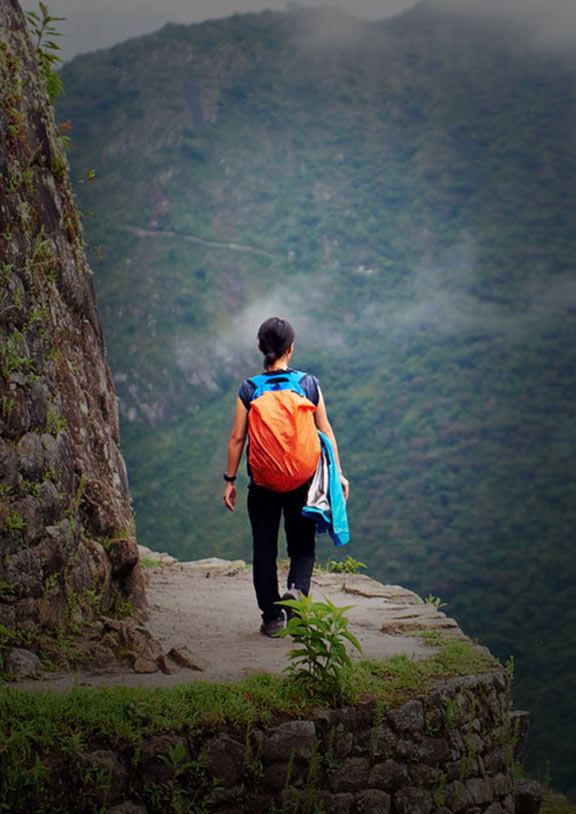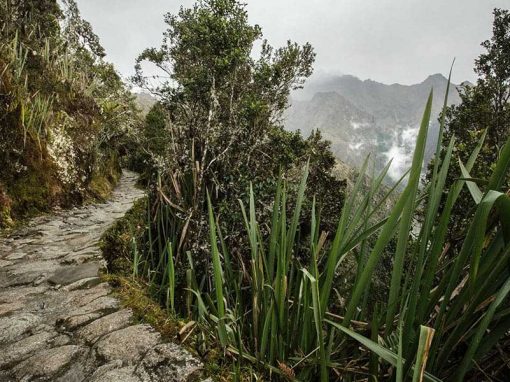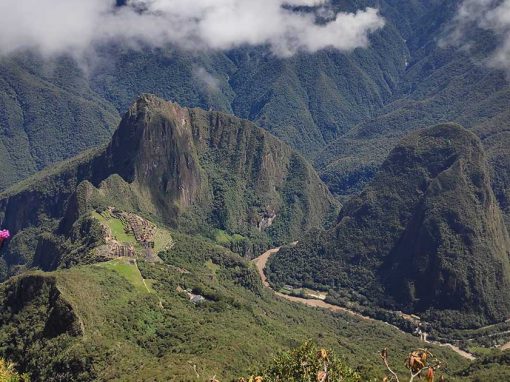Inca Trail porters quite literally take the load off your back during the 4-day, 27-mile journey to the Sun Gate entrance of Machu Picchu. Pack animals are not allowed on this iconic trail, so porters carry all the essential food and camping equipment your group needs. You can also hire a porter to help carry your personal belongings.
In this feature, we shine the spotlight on these rockstars of the Andes and explain the vital work they do on the Inca Trail.
- What Porters Do
- Porter Welfare in Peru
- Pick a Responsible Tour Operator
- Porters, Not Pack Animals. Why?
- How Much to Tip Inca Trail Porters
- Hire an Inca Trial Porter
What Porters Do
Porters work rain or shine and at very high altitudes to make sure your trek of a lifetime in Peru goes off without a hitch. Walking long distances wearing a full pack, setting up and down campsites, and taking care of other essential logistics are all in a day’s work.
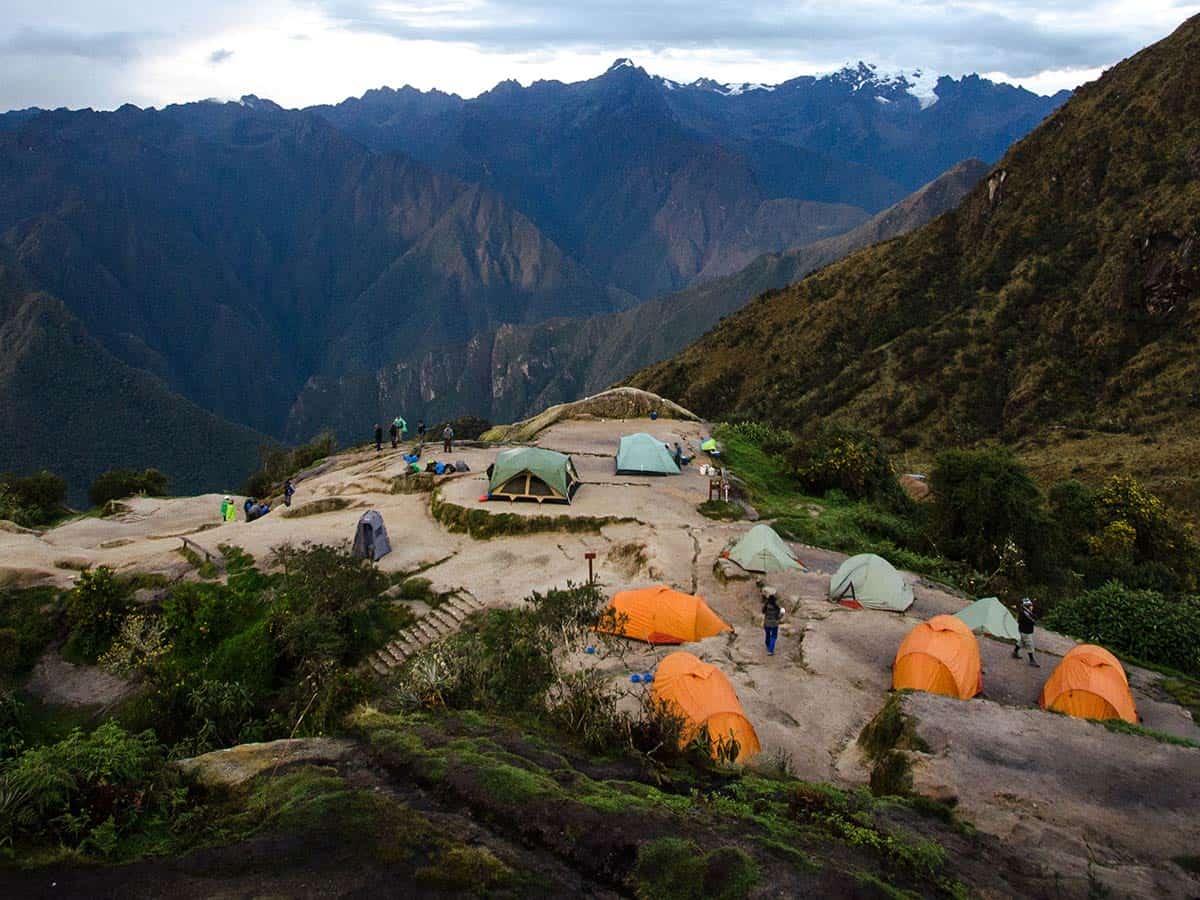
The porters of Wayki Trek, our preferred partner for the Inca Trail, come from two Cusco localities: Huarocondo in the Anta Province and Paru Paru, in the Pisaq District of the Calca Province. In small communities like these, working as a porter usually pays better than a job in their hometown.
Porter Welfare in Peru
The Porter Protection Law in Peru helps to safeguard their work standards. These legal provisions include access to adequate clothing and equipment, a mandated minimum wage per day, and a maximum load limit of 20 kg (44 lbs). Wayki told us that the National Superintendency of Labor Inspection, or SUNAFIL, does random audits of agencies throughout the year to check if they comply with this law.
You’ll meet the porters for your group at the start of the Inca Trail and pass through the Km 82 control point. Here, officials cross-check trail permits with passports and weigh everything carried by the porters to ensure their packs don’t exceed the legal limit. If a porter’s load is over 20 kg, the tour operator receives a fine, and too many penalties can result in the company losing the license to operate the Inca Trail.
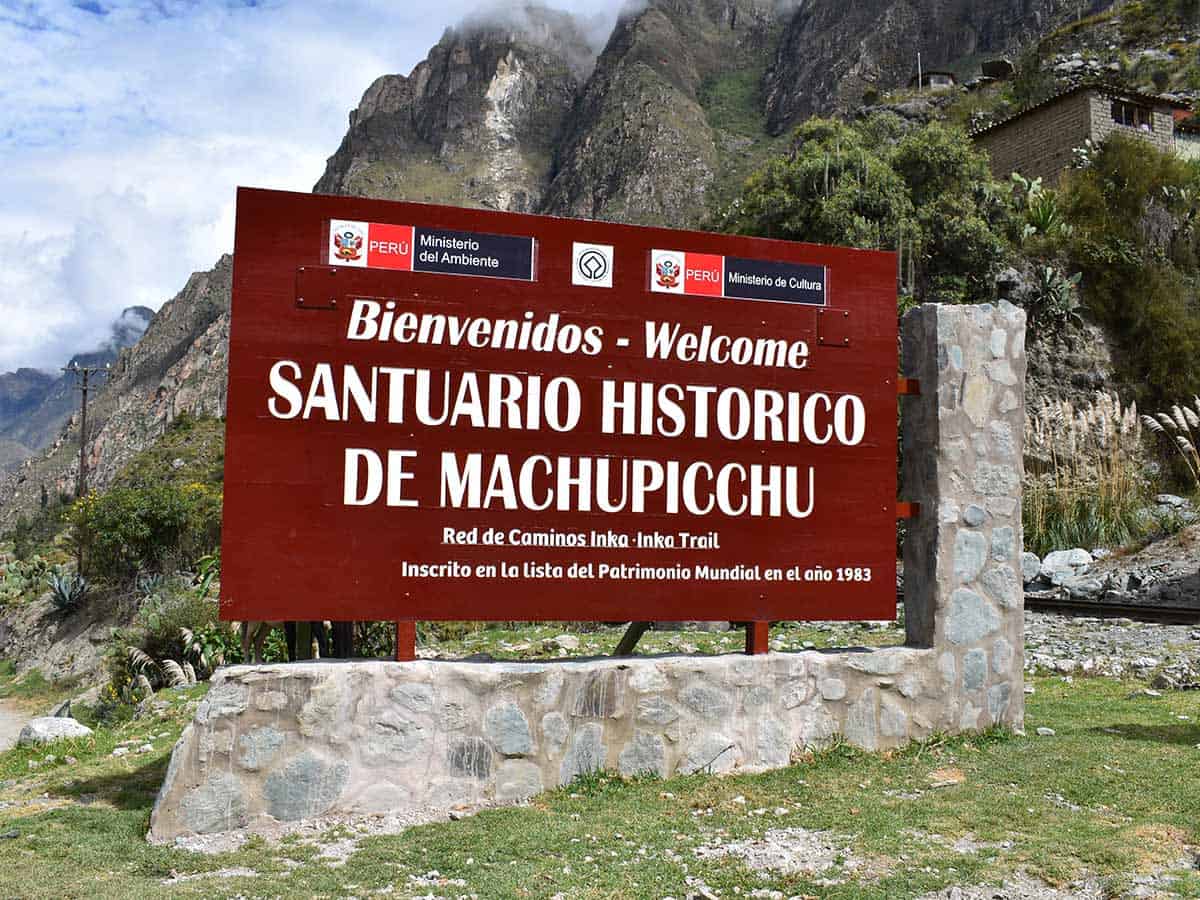
We asked Wayki what additional measures they take to ensure the well-being and safety of their porter employees. During February, when the Inca Trail closes each year, their team participates in workshops and personal growth training. These are taught by local, national, and foreign coaches to improve their skills and work performance. Wayki Trek porters also have personal accident insurance.
Pick a Responsible Tour Operator
Several agencies in Cusco are certified by The Ministry of Foreign Trade and Tourism in Peru, but not many are authorized to operate treks for the Inca Trail. This coveted job is reserved for a limited number of Peruvian-owned tour operators, like Wayki, that receive an exclusive license from the government each year.
Apply your knowledge of Peru’s Porter Protection Law to judge a company’s ethical practices. Compare tour operator websites and check for any mention of legal standards and involvement with local Andean communities. Read client testimonials from additional online sources and ask seasoned Inca Trail trekkers about their own experience and recommendations.
Wayki Trek was founded in 1998 by a group of local guides. Along with providing top-notch trekking services for our travelers, the tour operator organizes social projects in the Sacred Valley. For example, Wayki helped the community of Huayllacocha construct a school library and built a health center in Chillipahau for nearly 200 families.
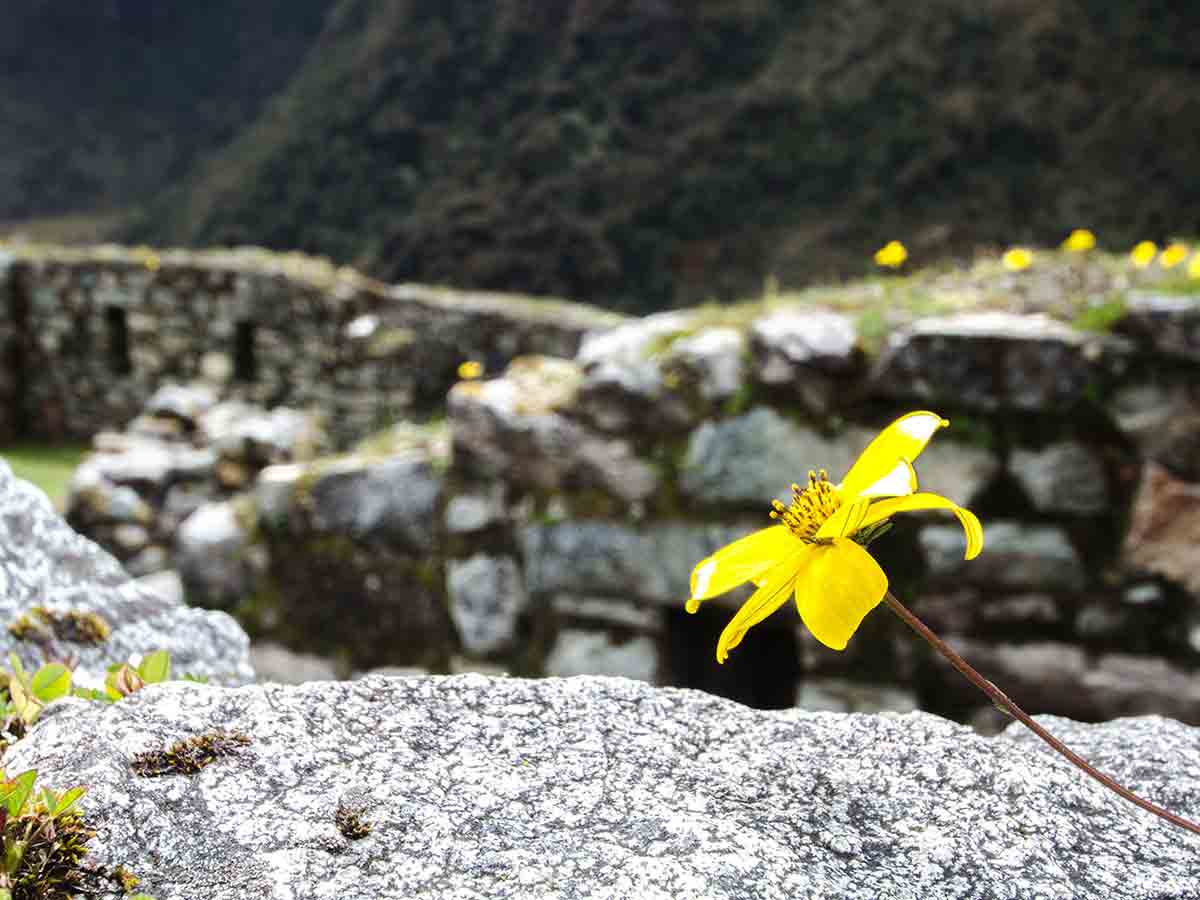
As you narrow down Inca Trail options, ask these questions:
- Why is the price so low? Too good to be true prices are tempting for your wallet but a red flag for porter welfare. A company offering severely reduced prices may do so because they cut corners with weight restrictions or pay meager wages. It’s unlikely that porter welfare is high on a company’s list if they charge under US$600 for a 4-day Inca Trail trek.
- How many porters will be accompanying your group on the Inca Trail? The number of porters on a trek depends on the size of the group. Responsible tour operators generally use about three porters for every two trekkers.
Porters, Not Pack Animals. Why?
In 2019, the 4-day Inca Trail route starting at Km 82 registered a total of 45,105 people (source: MINCETUR). With so much foot traffic, measures are in place to protect the condition of the trail. The hooves of pack animals are hard on the stone steps and path of the Inca Trail, so they are no longer allowed. Additionally, only 500 daily permits are available, and every February, the Inca Trail is closed for maintenance.
How Much to Tip Inca Trail Porters
The Inca Trail would be brutal without the help of porters, and you’ll want to show your appreciation. Interact with the porters during the trek. You can try sparking up a conversation and learn about their life in the Andes. If you don’t speak Spanish, a smile and simple “gracias” can help show your gratitude.
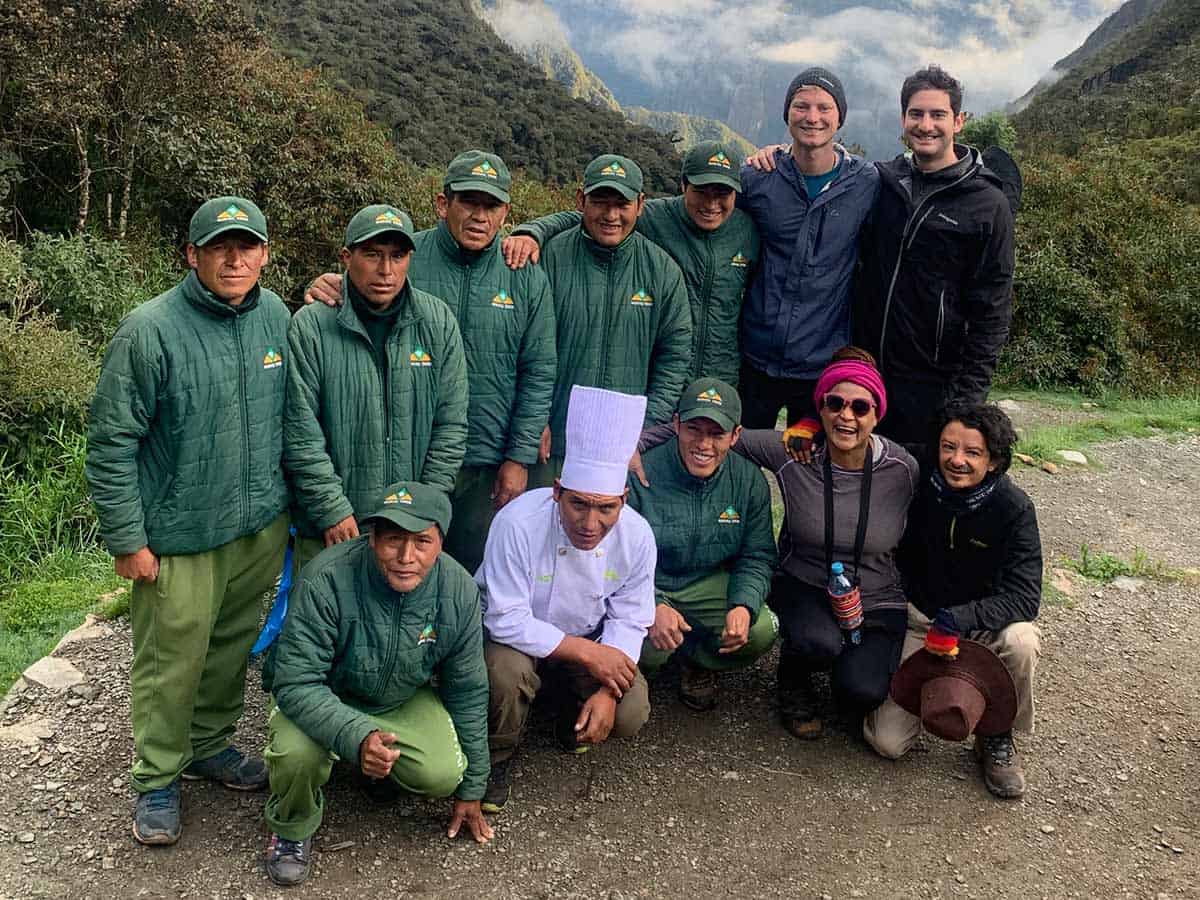
Photo by Peru For Less Traveler
Tipping is also a nice way to thank your porters and trekking team for a job well done. Tips are voluntary and the amount is up to your discretion. On the Inca Trail, it is customary to tip on the last night. We asked Wayki Trek for their advice and they recommend a collective tip of about $25 for each porter and $30 for the cook. Read more about Tipping in Peru.
Hire an Inca Trail Porter
You can hire a porter to carry 8 kg (18 lbs) or 15 kg (33 lbs) of your personal belongings. This service is not mandatory but highly recommended. Let your Travel Advisor know if you want to add a private porter to your trekking package when you book your Inca Trail permit(s). Only 500 trail permits are available daily, and this includes all the porters and other professional staff. Payment for a private porter covers their salary, food, and entrances to the Inca Trail and Machu Picchu.
Check out our Inca Trail destination page and start planning your trekking adventure with our experts today!
*This article was updated in March 2020.
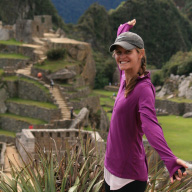
Britt is a California native who now calls Peru home. She is a traveler with a passion for all things outdoors, scuba diving, and capturing memories with her camera.


